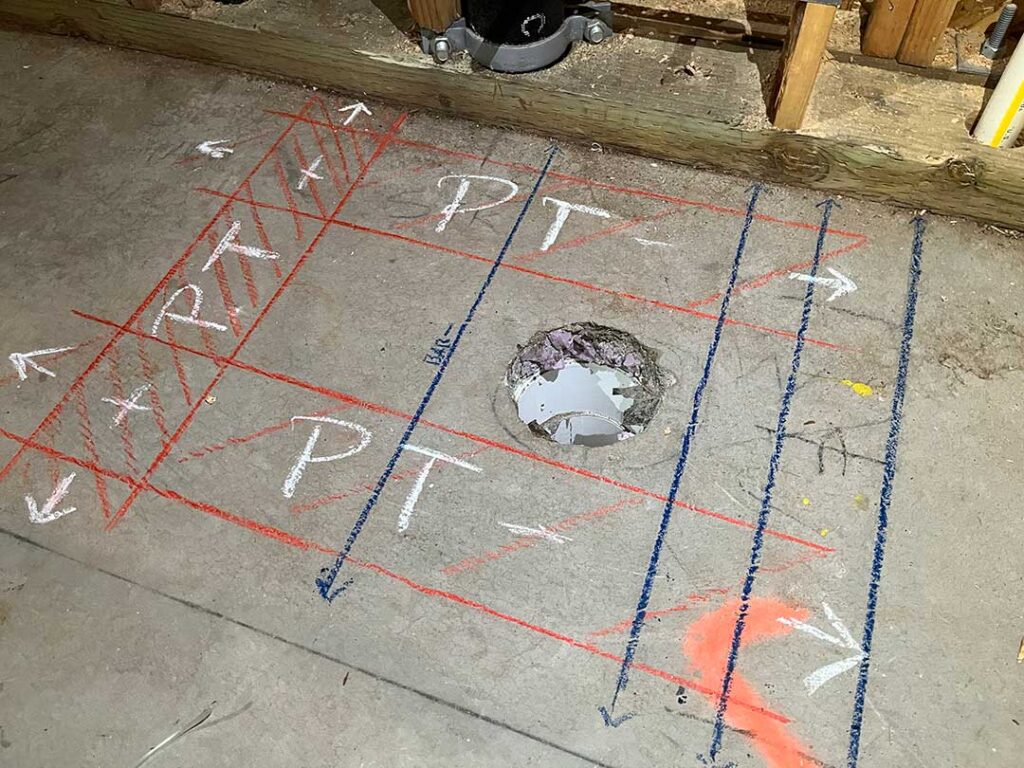The Ultimate RainierGPR Concrete Scanning Remedy Clarified
Wiki Article
Exploring the Depths: A Comprehensive Guide to Concrete Scanning and Its Diverse Applications
In the realm of building and infrastructure advancement, the careful procedure of concrete scanning holds a crucial role in guaranteeing the structural stability and safety of projects. As modern technology continues to advance, the applications of concrete scanning have broadened far past plain surface-level assessments. From discovering rebar and post-tension cords to mapping out channels and voids concealed within concrete frameworks, the abilities of contemporary scanning techniques are both vital and impressive. However, the true deepness of concrete scanning's prospective reaches even further, branching right into unanticipated industries and sparking cutting-edge remedies. The interconnected web of possibilities that concrete scanning presents is not just interesting yet also essential for the advancement of various sectors.Importance of Concrete Scanning
Comprehending the significance of concrete scanning is important in making sure the safety and security and stability of frameworks during construction and renovation tasks. Concrete scanning uses sophisticated innovations such as ground-penetrating radar (GPR) and electromagnetic induction to detect ingrained things, spaces, or various other anomalies within concrete structures.Moreover, concrete scanning plays an essential function in guaranteeing conformity with structure codes and regulations that mandate the protection of existing architectural elements during building activities. By properly drawing up the inner composition of concrete, scanning innovations make it possible for construction specialists to make informed decisions that support the architectural stability and resilience of structures and infrastructure tasks. Fundamentally, the importance of concrete scanning hinges on its capability to protect both the structural honesty and the personnel involved in building and construction ventures.
Technologies Utilized in Concrete Scanning
Concrete scanning relies upon innovative technologies such as ground-penetrating radar (GPR) and electro-magnetic induction to precisely spot ingrained things and anomalies within concrete frameworks. Ground-penetrating radar runs by emitting high-frequency electromagnetic waves right into the concrete. When these waves run into various materials or spaces within the concrete, they bounce back to the surface, permitting the GPR system to create an in-depth subsurface picture. This innovation is specifically efficient in situating rebar, post-tension cables, conduits, and various other objects installed in concrete.Electro-magnetic induction, on the various other hand, functions by generating electromagnetic areas around a concrete structure with a transmitter coil. When steel objects are existing within the concrete, they disrupt these magnetic fields, triggering eddy currents to flow with the metal. By measuring the changes in the magnetic fields with a receiver coil, the system can determine the place of metallic objects in the concrete.
These innovative innovations play a vital role in non-destructive testing, guaranteeing the safety and honesty of concrete structures in numerous sectors.
Applications in Building Industry
Within the building industry, concrete scanning see this website technology finds varied applications that boost task efficiency and security. In addition, concrete scanning is utilized for finding spaces, such as air pockets or areas of damage within concrete, which can jeopardize the total stamina of a framework. Concrete scanning plays an essential role in quality control by validating the density of concrete covers over reinforcement, guaranteeing compliance with layout specifications and requirements.
Safety And Security Advantages of Concrete Scanning
In the world of building and construction security, the execution of concrete scanning technology presents a paramount advantage in preemptively identifying prospective dangers and strengthening architectural stability. By using innovative scanning approaches such as ground-penetrating radar (GPR) and electromagnetic induction, building teams can precisely situate rebar, post-tension cable televisions, channels, and various other covert objects within concrete frameworks. This aggressive technique substantially decreases the danger of unintended strikes during exploration, reducing, or coring tasks, therefore protecting against costly problems, injuries, and job delays.In addition, concrete scanning enhances worker security by providing real-time info concerning the structural condition of concrete elements. By attending to prospective safety problems immediately, concrete scanning contributes to developing a safe working setting and reducing the Resources likelihood of structural failings or crashes on building and construction websites.
Future Patterns in Concrete Scanning
Emerging developments in scanning modern technology are poised to revolutionize the area of concrete examination and evaluation. By utilizing the power of AI, these systems can examine vast quantities of information collected during scanning processes to provide more in-depth and precise insights into the condition of concrete frameworks.An additional significant pattern is the growth of even more easy to use and portable scanning tools. Miniaturization of scanning devices enables easier access to confined spaces and remote areas, making examinations much more reliable and extensive. In addition, innovations in cordless interaction technologies make it possible for real-time information transfer and analysis, assisting in quicker decision-making processes.
Moreover, there is an expanding emphasis on sustainability in concrete scanning innovations - RainierGPR Concrete Scanning. Manufacturers are progressively incorporating eco-friendly materials and energy-efficient attributes into their gadgets to decrease environmental effect. These future trends are readied to enhance the effectiveness, precision, and sustainability of concrete scanning techniques, forming the industry's future landscape
Final Thought
Finally, concrete scanning plays a vital function in the construction sector by ensuring the safety and security and performance of numerous jobs. By utilizing innovative modern technologies, such as GPR and radar imaging, professionals are able to accurately discover prospective threats within concrete structures. The applications of concrete scanning are vast and proceed to advance, making it an important tool for keeping the integrity of structures and framework. As innovation developments, the future of concrete scanning holds promising developments for boosting construction procedures.

Report this wiki page